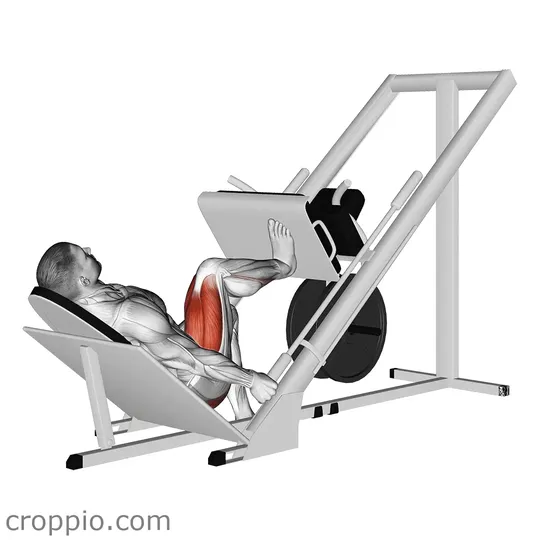Single Leg Leg Press

Muscles Involved
The single leg leg press primarily targets the quadriceps, which are the large muscles located at the front of the thigh. As the primary mover in this exercise, the quadriceps work to extend the knee when pushing the platform away. Secondary muscles engaged during this movement include the hamstrings, which help in stabilizing the leg; the gluteus maximus, which aids in hip extension; and the calves, particularly the soleus and gastrocnemius, which assist in stabilizing the ankle joint throughout the lift. This unilateral movement also challenges the core muscles, enhancing stability and balance as the body works to control the lift on one side.
Top Mistakes
- Neglecting proper foot placement, which can lead to imbalance and ineffective isolation of the target muscle.
- Locking the knee joint at the end of the press, increasing the risk of injury.
- Rounding the back or leaning too far forward, which compromises spinal alignment and can lead to strain.
- Using excessive weight, resulting in poor form and loss of control during the exercise.
Execution Tips
- Begin by adjusting the seat and footplate so that your chosen leg can comfortably press the platform without locking the knees.
- Position your foot slightly below the midpoint of the platform to optimize leverage and engage the quads effectively.
- Maintain a neutral spine, keeping your back pressed against the seat throughout the movement.
- Push through your heel to engage your glutes and hamstrings while keeping the motion controlled and steady.
- Lower the platform slowly, ensuring that you maintain tension in your working leg without overextending or rounding your back.
Workouts
The single leg leg press can be incorporated into a comprehensive lower body workout. A typical session might include:
- 3 sets of 8-12 repetitions per leg, allowing for adequate rest (60-90 seconds) between sets.
- Complementary exercises such as lunges, squats, and deadlifts can be included to create a balanced routine.
- Focus on alternating legs to ensure even muscle development and stability.
Conclusion
The single leg leg press is an excellent exercise for developing unilateral leg strength, improving muscular imbalances, and enhancing core stability. By focusing on one leg at a time, this exercise not only boosts your lower body power but also helps in refining your balance and coordination. Incorporating the single leg leg press into your training regimen contributes to overall athletic performance, making it a valuable addition to any fitness routine.



